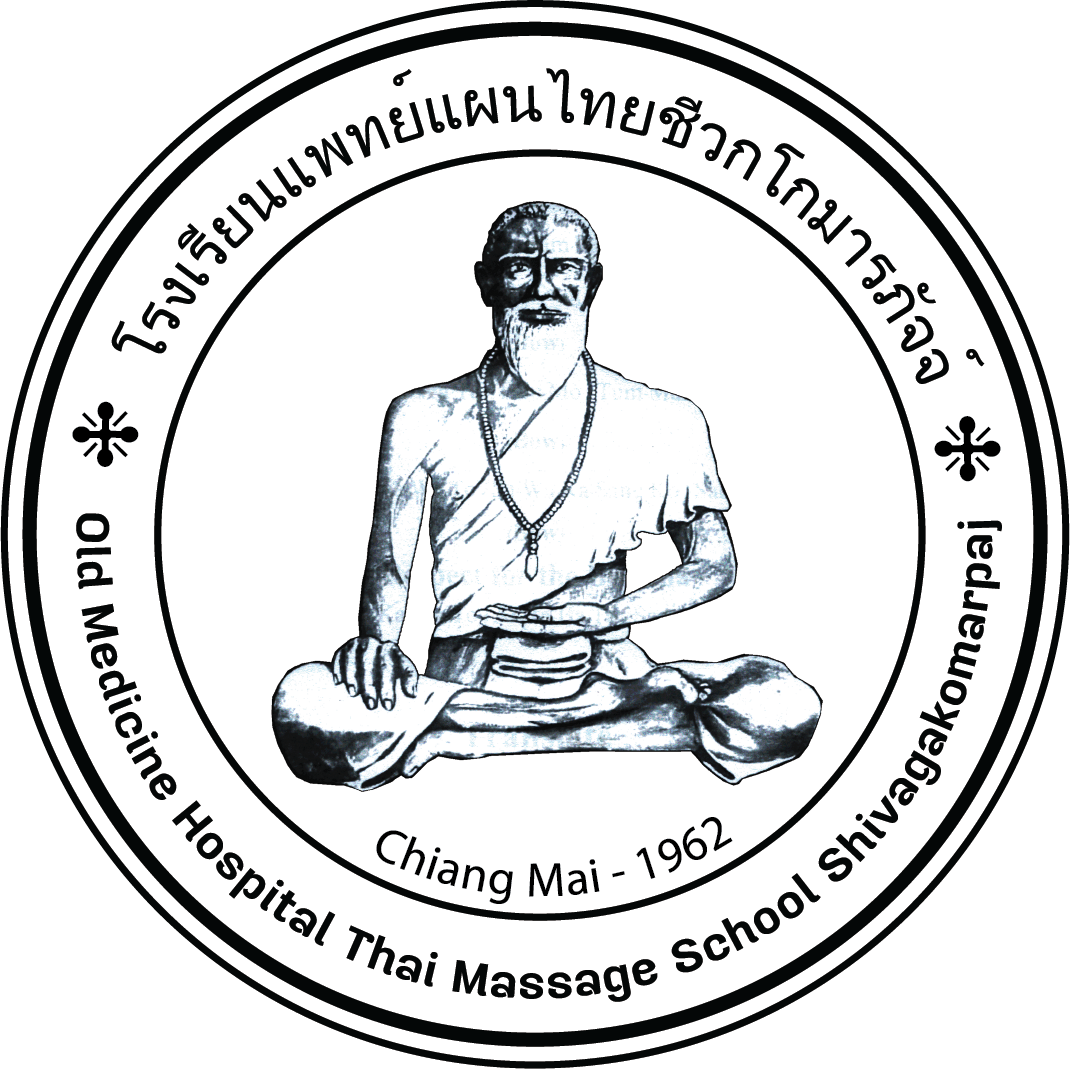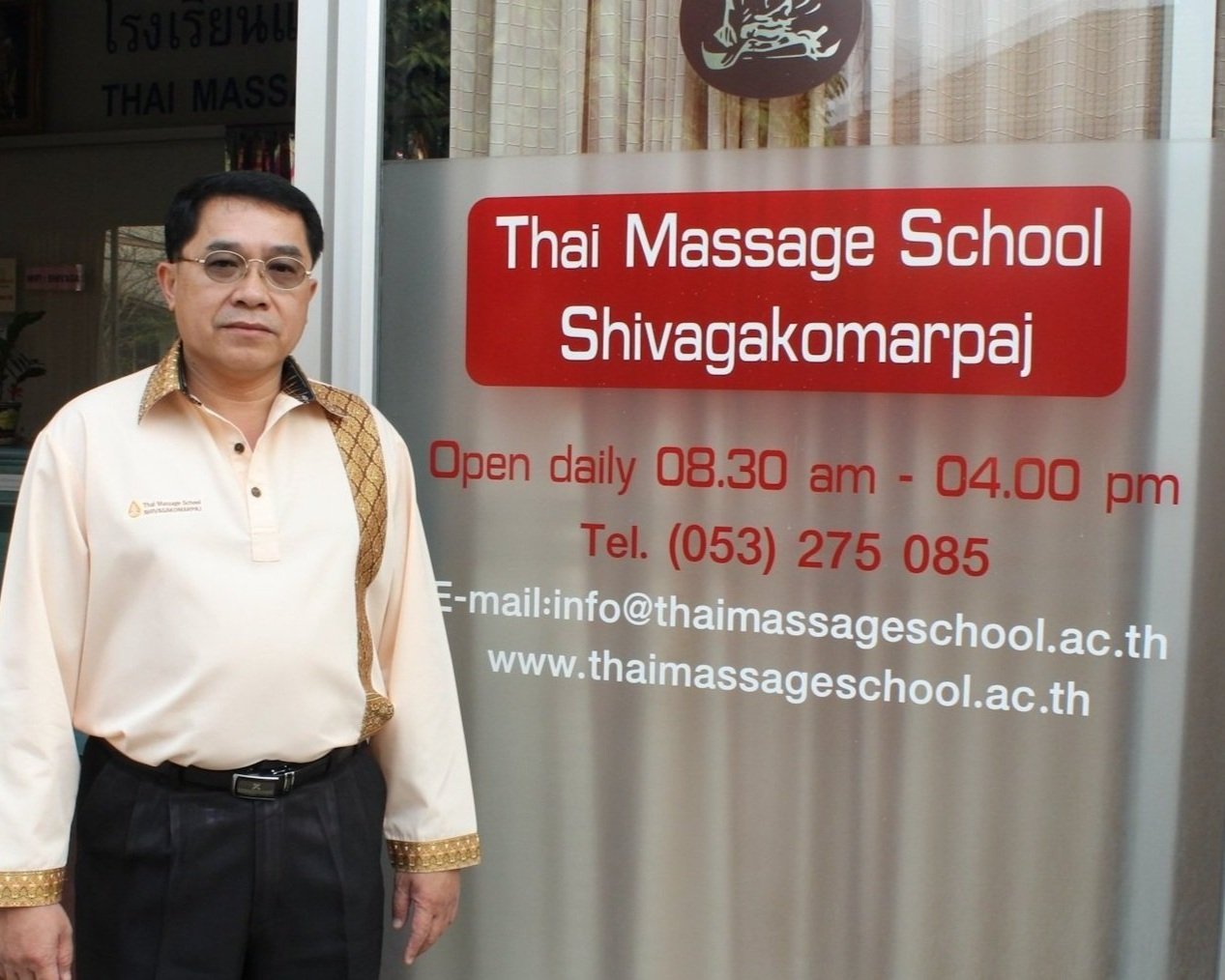
About Us
เกี่ยวกับเรา
The Old Medicine Hospital Thai Massage School Shivagakomarapaj stands with pride as the pioneering and distinguished originator of Lanna Thai massage, representing the traditional Northern Style of Thai Massage established in 1962. Founded by Master Sintorn Chaichakan and presently led by Ajahn Wasan Chaichakan, a second-generation practitioner who continues his father's legacy, our institution has been instrumental in training thousands of students globally for over 60 years. The Lanna-style Northern Thai massage, cultivated at our school, holds international recognition and practice, serving as the standard foundation for "Northern Style Traditional Thai Massage”.
Lanna-style Northern Thai massage is distinct from other forms of Thai massage due to its unique characteristics and approach:
Slow and Meditative Movements: Lanna-style massage is characterized by slow, deliberate movements, creating a meditative and rhythmic experience. This contrasts with the faster pace often associated with other Thai massage styles.
Deep Stretching in Yoga Postures: The massage involves deep stretching techniques inspired by yoga postures. This emphasis on stretching contributes to increased flexibility and improved range of motion for the recipient.
Acupressure, Pressing, and Stretching Techniques: Lanna-style massage places a specific focus on acupressure, pressing, and stretching. These techniques are designed to release tension, promote energy flow, and enhance overall well-being.
Rooted in Yogic, Ayurvedic, and Herbal Elements: The practice incorporates elements from Yogic and Ayurvedic traditions, emphasizing holistic well-being. Additionally, the use of herbal compresses and applications adds a herbal dimension to the massage, reflecting the expertise of the Lanna Folk Healing Arts.
Historical Legacy: Originating from The Old Medicine Hospital Thai Massage School Shivagakomarapaj, founded in 1962, Lanna-style massage carries a historical legacy. Its development was commissioned by the King of Thailand decades ago, setting it apart with a rich cultural and historical background.
Distinctive Choreography and Sequence: Lanna-style massage follows a specific choreography and sequence of movements that are proprietary to its method. This sequence is designed to provide therapeutic benefits and is not replicated in the same way by other Thai massage styles.
Spiritual Aspect: There is a spiritual dimension to Lanna-style massage, with practitioners often incorporating Buddhist prayers at the beginning and end of the massage. This spiritual connection adds a unique element to the overall experience.
Mat-Based Approach: Unlike massages performed on tables, Lanna-style massage is typically conducted on a mat or raised platform. This allows for greater flexibility in movement and facilitates the use of various techniques.
What is lineage?
The word lineage is used to describe everyone who descends from a particular ancestor.
Most traditional Thai healers trace their lineage back to the "Father Doctor" Jivaka Komarabhacca, the Buddha's personal physician. In addition, one's direct lineage of teachers is considered an important indication of authenticity and a mark of high quality. The Shivagakomarpaj Lineage is one of the most respected and widespread line ages of Thai massage in the world today.
The founding of Old Medicine Hospital
Ajahn ("Master") Sintorn
Ajahn Sintorn Chaichakan is honored as the founder of the Old Medicine Hospital and the Shivagakomarpaj Lineage, known for traditional Thai massage. He studied Thai medicine at Wat Pho and later became a teacher there. He played a significant role in starting the massage program at Wat Pho under the request of King Bhumibol Adulyadej.
Ajahn Sintorn was the founder of the Old Medicine Hospital and of the Shivagakomarpaj Lineage. He first studied traditional Thai medicine at Wat Pho in the late 1950s. Upon completing the degree in 1958, he stayed on as a teacher for four more years. Before that time, Wat Pho did not teach Thai massage, and at the personal request of His Majesty King Bhumibol Adulyadej (Rama IX), Ajahn Sintorn was instrumental in starting the massage program to complement the herbal training Wat Pho had offered for many years.
In 1962, he returned to Chiang Mai and began to practice medicine at small dispensary on the grounds of several city temples. At this time, the government of Thailand was only interested in supporting Western medicine, and Thai traditions were kept alive by their association with Buddhist institutions. Living in the north of Thailand, Ajahn Sintorn adapted his practice of massage and herbal medicine to incorporate aspects of northern culture. One important change he made to the Wat Pho massage routine was to slow it down, he says to suit the "laid-back style" of Chiang Mai natives. He also focused on local herbal knowledge, incorporating treatments that were not part of the Wat Pho tradition into his pharmacopoeia.
In 1973, Ajahn Sintorn purchased land just outside of Chiang Mai center and established the current facility. With only a small grant from the government to start up, the institution was quite small at that time, with only 10 in-patient beds. From these humble beginnings, the institution's traditional medicine hospital grew to the current size. In the 1990s, the program graduated an average of 60-70 Thai students per year in traditional medicine, and the Western students of Thai massage numbered well into the hundreds. Today, the Old Medicine Hospital is part of both national and regional efforts to standardize and regulate the massage industry, to improve safety and authenticity of traditional healthcare in the years to come.
Ajahn Sintorn remained the director of the Old Medicine Hospital facility until his passing away on Oct 19, 2005. His son, Ajahn Wasan is the current director.
Old Medicine Hospital today
Ajahn Wasan Chaichakan, carries forward his family's tradition, ensuring that the ancient Thai healing arts thrive and endure for generations to come.
The Old Medicine Hospital thrives in a city renowned for the study of Northern Style Thai massage. The Old Medicine Hospital is revered for its enduring and prestigious legacy. It holds a longstanding reputation as one of Thailand's most esteemed traditional medicine centers and was the pioneering institution in Chiang Mai to welcome Western tourists eager to master the art of Thai massage.
Our Mission
To accomplish our established objectives, the Thai Massage School Shivagakomarpaj has formulated a mission that will be executed based on the following core principles:
Development of the curriculum
We are dedicated to refining the essence of our curriculum, teaching methodologies, and assessment practices to ensure they remain contemporary, relevant, and widely accepted by both the public and official institutions.
Development of the area
We are committed to providing appropriate learning tools and a conducive environment that supports effective teaching and learning.
Development of Human Resources
We aim to foster innovation, impart practical wellness and health knowledge, and provide welfare measures to nurture a deep affinity for our institute.
Public Relations
To provide academic cooperation to other association, implementing road shows, marketing material and advertising by various means in order to make it widely known to the public
Our Educational Philosophy
Thai Massage School Shivagakomarpaj is devoted to offering our students opportunities for personal, academic, and professional growth.
Our School Values
Professionalism
We are committed to developing, following and modeling the best practices, experiences and skills with our students.
Diversity
We acknowledge that the education is grounded and enriched by the wide variety of life experiences and learning styles of our students and teachers
Growth
We continuously seek to improve ourselves in an effort to become better teachers, learner and professionals in our fields.
Conservative
We are conserved the Thai Heritage of Thai Massage, because of it's indigenous knowledge.





